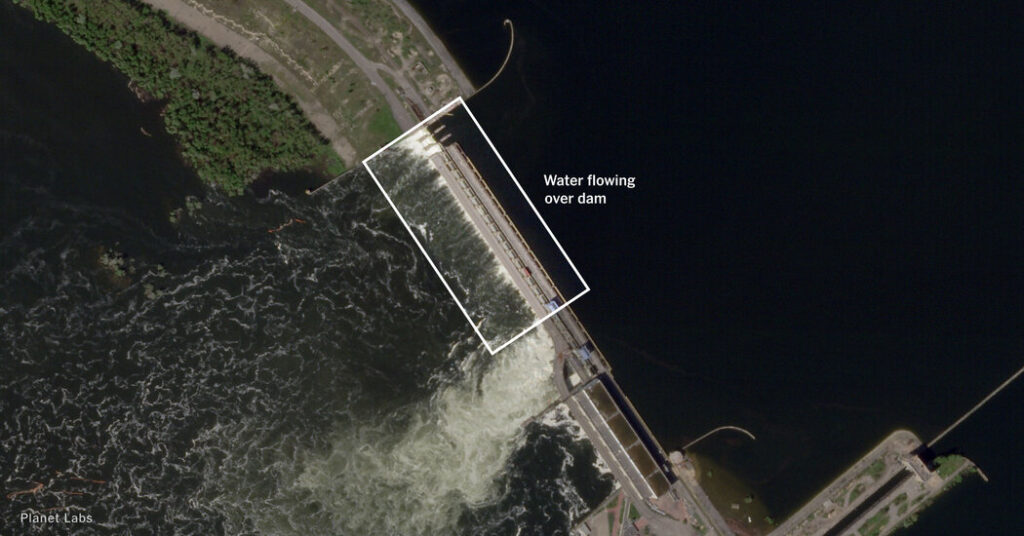Water levels at a reservoir that supplies southern Ukraine with drinking water have reached a 30-year high, increasing the possibility of flooding in the area and signaling a lack of regulation. The sudden increase in levels at the Kakhovka reservoir appears in altimetry data — which uses satellites to measure height — published on Friday by Theia, a French earth data provider.
The U.S. Department of Agriculture’s Foreign Agricultural Service has not recorded water levels that high at the dam since at least 1992, when the service began publishing data. Russian forces control the dam and the nearby power plant, which are vital to managing water levels in the reservoir.
A New York Times analysis of satellite imagery over a period of several months also showed that the water level has risen significantly, and now covers sandbars that line the waterway. In recent days, the reservoir has reached more concerning levels, appearing to actually crest over the top of the dam.
The development is a dramatic turnabout, coming only a few months after water levels in the reservoir had reached a historic low. At the time, Ukrainian officials raised concerns about a lack of water for drinking, agriculture and the cooling of the Zaporizhzhia Nuclear Power Plant nearby. By the end of February, the water level was sitting at nearly two meters below its usual average.
Recent videos and satellite imagery from late last year show that at least three of the gates that control the flow of water through the dam were opened — apparently by Russian forces in control of the Kakhovka power plant. That, in turn, allowed water to rush through at an alarming rate over the winter, despite relatively little water entering the reservoir from upstream.
It is unclear exactly how the water level rose so significantly since then. But David Helms, a former U.S. Air Force and National Oceanic and Atmospheric Administration meteorologist who researches the dam, said that Russian forces seem to have kept too few gates open to control the flow of winter snowmelt and spring rains. Likening the effect to a leaky bucket, Mr. Helms said that too much water has been entering the reservoir.
“What the river is doing is dumping a lot of water in,” Mr. Helms said. “And it’s far exceeding the discharge rate.”
The dam, which lies along the front line, has been a point of tension throughout the war. In August, a Ukrainian artillery strike targeted a bridge along the dam, though the dam avoided sustaining any damage. Then, in November, Russian forces deliberately destroyed part of the road directly above the dam’s gates, carrying out an explosion dangerously close to vital dam infrastructure.


